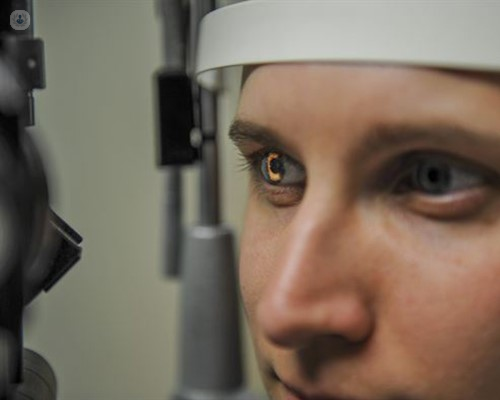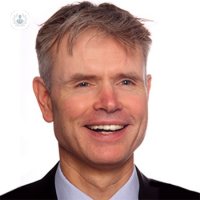LASIK vs SMILE
Escrito por:Are you interested in getting laser surgery to correct your short-sightedness? You may have come across both LASIK and SMILE whilst researching; two very similar procedures but each with their own pros and cons. Sheffield based ophthalmologist, Mr Matthew Edwards, explains what each one is and offers his opinion on both.

What are these techniques?
LASIK is an acronym for “laser-assisted in situ keratomileusis”, while SMILE is an acronym for “small incision lenticule extraction”. Both of these procedures use a highly focused laser light to make incisions and reshape your corneal tissue to correct your vision. However, the main procedural difference between the two is that an excimer laser is not used during the SMILE procedure and instead, a femtosecond laser cuts, rather than ablates a refractive lenticule within the cornea. In addition, both can treat myopia (near-sightedness) and astigmatism, however, at present only LASIK is able to treat hyperopia (far-sightedness).
Which is your treatment of choice?
SMILE is my treatment of choice for the majority of those on whom I do laser refractive surgery to correct myopia. It is currently not licensed for the treatment of hyperopia, but that’ll likely be available soon.
LASIK is one of the original procedures and still remains an excellent treatment option; I should know because I still do a lot of it! It has a long track record and provides excellent results. I often recommend this procedure for people with relatively low degrees of short-sightedness: in general those with less than -2D of myopia.
What are the pros and cons of each procedure?
One of the main advantages of SMILE over LASIK is that it causes fewer and if so, milder ‘dry-eye’ symptoms. These are relatively common although fortunately nearly always only transient after laser treatment.
SMILE surgery can be looked upon as being the ‘small-incision’ version of LASIK: we know that there has been a trend towards reducing incision size across the board in human surgery. The smaller the cut, the more stable and the stronger the residual tissue. A SMILE incision is less than a tenth of the circumference of a LASIK flap.
One relatively small, but nice advantage of SMILE is that it is quicker than LASIK, meaning clients will be in the laser room for less time!
How does a patient choose one over the other?
Of course, a final decision about the best treatment can only be made after a discussion with the surgeon undertaking the procedure. All laser treatments must be individually customised, therefore, in this article, I can’t go into all of the relative pros and cons of each technique. Your surgeon will talk you through the advantages and disadvantages based on your individual case and will help you in making the decision.
If you are interested in having either of these procedures, visit Mr Mathew Edwards by going to his profile and booking a consultation with him.



